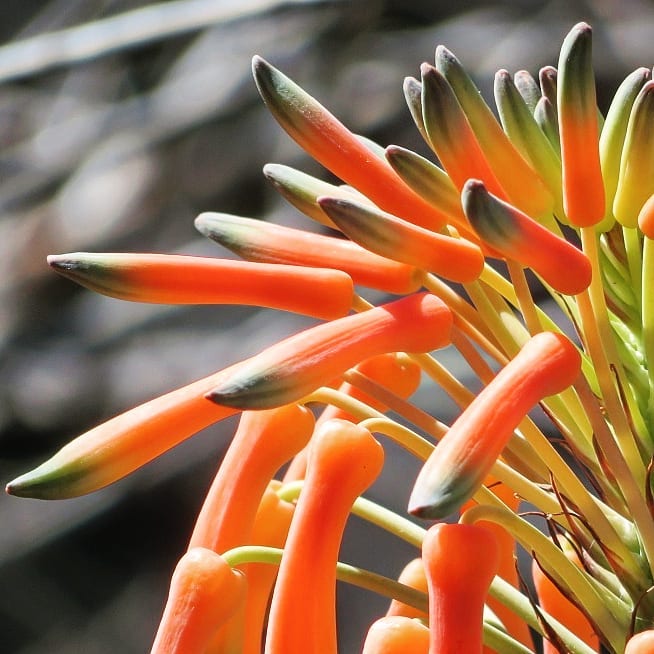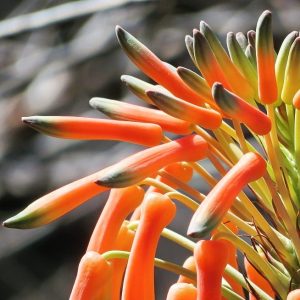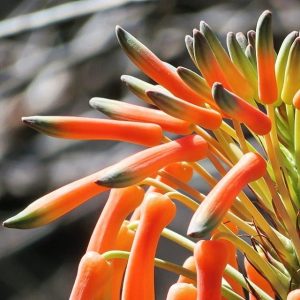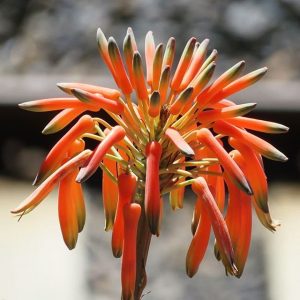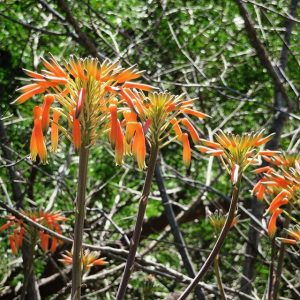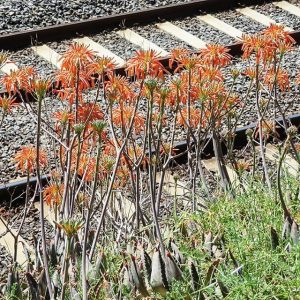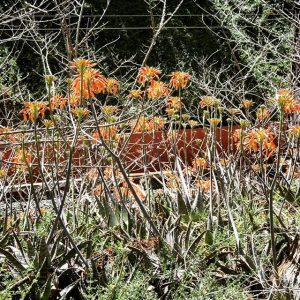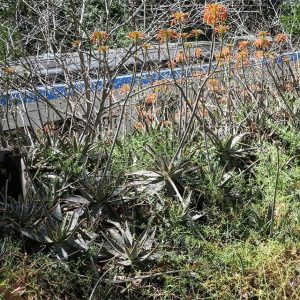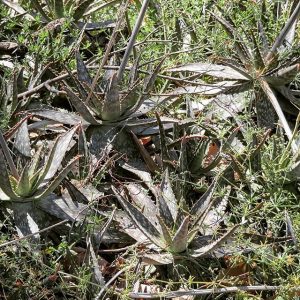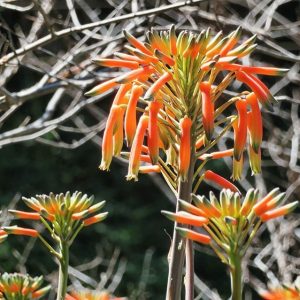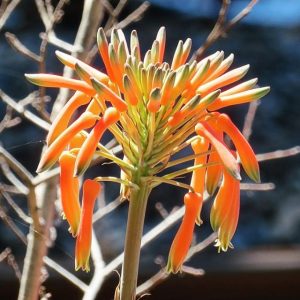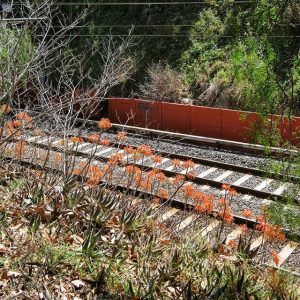Soap Aloe (Aloe maculata), established across approximately 50 metres of railway embankment at Spring Street. From the beginning, aloes and other succulents were made a part of Melbourne’s exotic garden palette: drought-proof and low maintenance, and inexpensively procured thanks to the colonial trade via the Cape. Their fashion rose and fell with the times; as one wartime columnist in the Age newspaper put it, they made great ‘austerity plants’. Unfortunately, as with other imported succulents, they invade areas of arid and stony bushland, including important natural formations.
With succulents, naturalisation is frequently the product of landowner neglect, as regular manual control is needed with plants like aloes to prevent their local spread, and responsible disposal rather than surreptitious tipping of garden waste is too difficult a sell.
However, rather than a dumping, I do wonder if the several discrete infestations of Aloe and Agave south of Wellington Parade are the remains of an old civic planting. They have a certain look about them, of lost glory and obsolete intention. Counterfactual: at my local railway station, someone has on independent initiative planted out with complete intention what appears to be the undivided contents of a succulent basket arrangement. On the inner margins of the metropolitan, time and (in)attention may be the only dividers that separate the artifacts of grand civic gesture from those of personal shame.
View Original Post on Instagram
Search for information about Aloe maculata in the Flora of Victoria
View information and occurrences of Aloe maculata on the Atlas of Living Australia
